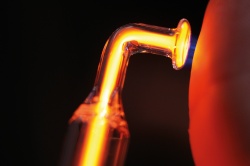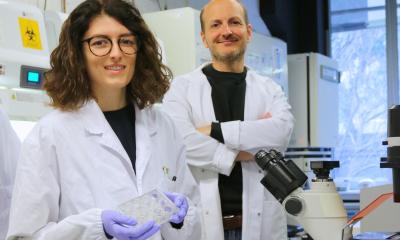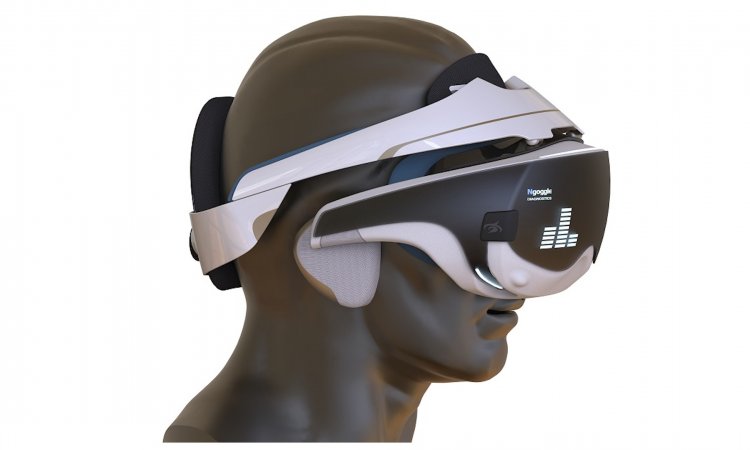Cold plasma
Treatment out of a power socket
Electricity is not the only thing that should come out of an electrical socket; ideally so should cold atmospheric plasma, according to Dr Georg Daeschlein, at the Dermatology Department, University of Greifswald, who has investigated its medical properties for years.
Report: Ralf Mateblowski


Put very simply, this plasma only requires ambient air, high electrical voltage and strong, i.e. even visible discharges. Experienced manufacturers now offer stable and safe generators in pocket format, such as ‘plasma pens’ for instance. Admittedly, there are now even battery-operated models…
Asked about the effective components of plasma, Daeschlein admits that a lot is not fully understood: ‘Although not all the molecular angles have been completely explored as yet, we know that the antimicrobial effect plays a central part, being very potent, wide-ranging and easily reproducible.’
The second important aspect to him is the stimulation of cellular repair mechanisms and the generation of mediators relevant for healing that promote tissue regeneration and therefore wound healing.
Looking back…
The use of plasma in medicine, such as for sterilisation and disinfection procedures and especially for surgery, began in the 1930s, although hot (thermal) plasma was used then. Only its ‘domestication’ over the last few years paved the way for use in humans with so-called cold plasma. Its effect on parasites, bacteria, viruses and fungi is impressive and can be medically utilised and the effect has by no means been exhausted.
Therapeutic treatment with cold plasma was first described around 100 years ago, although it was then known as high-frequency or D’Arsonval treatment and recommended for a multitude of diverse indications, ranging from migraine to vaginal yeast infections and depression. Now, however, the effects of plasma are being scientifically studied, using up-to-date techniques to facilitate specific and optimised treatment. It is an interesting fact that clinical success in the treatment of major skin infections, such as cutaneous tuberculosis, was described even in the early days of treatment, but at the time no scientific explanation could be found.
… and the present
Current therapeutic approaches range from the treatment of all types of chronic cutaneous wounds to the use as a skin antiseptic against highly-resistant problem pathogens.
A working group under dermatologist Professor Jürgen Lademann, at Charité University Hospital in Berlin, demonstrated antimicrobial effects that reach deeper ‘under the skin’ than conventional treatments, which may have great significance for the fight against postoperative infections. When asked which area of application is currently the most defined, the experienced clinician described this as the ‘promotion of healing processes, in particular those with the involvement of micro-organisms and other processes which are difficult to treat’.
One major advantage of the procedure is the detection of a ‘physical’ antiseptic effect on problem pathogens on the skin and in wounds that cannot be treated, or only treated with great difficulty, using conventional methods. The advantages, apart from the high potency described, include the lack of need for ‘chemistry’, i.e. no necessity for the costly storage of dangerous, flammable materials. The solution simply comes out of a power socket: Switch on, disinfect, switch off – and the procedure is entirely without side effects.
Looking ahead
A definite ‘yes’ is Daeschlein’s reply when asked about the prospects of the procedure. ‘The potential use of plasma is huge, although there is still currently a lack of scientifically grounded facts. The use in tumour treatment for instance is at very early stages, with our own group as well as a number of French working groups able to demonstrate the basic effectiveness in animal experiments. This makes the use for primary as well as palliative tumour treatment conceivable and, due to the comparatively simple technology and handling, also for a home care setting, although there is still a long way to go.
‘Technical safety and protection against undesired effects are of central importance. The prerequisites for use, apart from safety concerns, are a firm medical indication as well as medical supervision and aftercare. In Germany we now have a number of reputable suppliers as well as reputable users and researchers. However, the use of plasma in cases where the indication is not assured or with (improper) enhancements of use, which may possibly lead to undesired side effects, could endanger the expansion of the product.’
The mandate
Plasma is a mixture of different, proven biophysical methods of action, which have never before been used in combination. So what should happen next? ‘Apart from further research into basic methods of action the most important objective for the next few years will be not only to determine the optimum configuration of devices (such as energy dose, wavelength, frequency, pulsing, signal shape) for each respective disease where the basic effectiveness of the treatment has been proven, but also respectively to work out the optimum form of treatment for each indication, i.e. treatment intervals, dose, reactions occurring in the tissue and the body.
‘This is a move in the direction of personalised medicine, i.e. an attempt to find out which entities are beneficial for each individual patient and their symptoms.’
Daeschlein also emphasises the definite basis for many medically suggestive treatments and adds: ‘A further highlight is the impressive, sustainable and effective treatment of pain in cases where severe, chronic symptoms can otherwise not or scarcely be relieved, such as after viral infections or when the cranial nerves are affected.
‘The results of this treatment have already attracted attention among pain therapists because they promise success without the need for conventional medication. This could make many other invasive, risky as well as expensive and longwinded treatments redundant. Treatment for pain relief with “plasma at home” and under self-direction in the same way as other types of feedback therapy and auto-suggestion treatment for chronic pain is conceivable, safe and has already proved successful.’
PROFILE:
Georg Daeschlein MD, Laboratory head at the Clinic and Polyclinic for Dermatology, University of Greifswald (Director Prof. Michael Jünger MD), graduated from the Christian Albrecht University in Kiel and the Free University Berlin. In 1992 he attained the first of four advanced specialist medical qualifications: Laboratory Medicine; Microbiology and Infection Epidemiology; Infection Prevention and Control and Environmental Medicine and, in 2014, Dermatology and Sexually Transmitted Diseases. Dr Daeschlein’s research is on infection medicine, wound healing, physical procedures and plasma medicine.
23.03.2015











